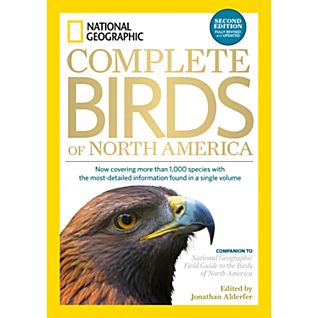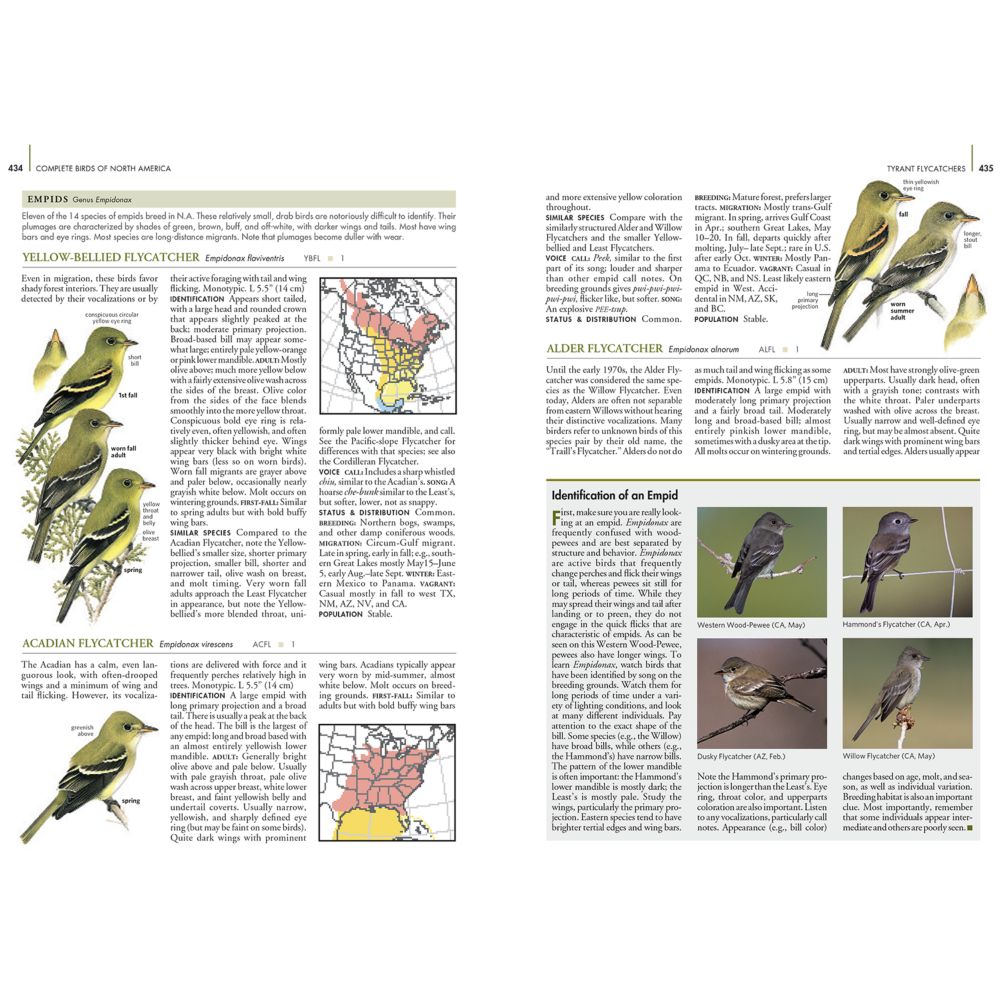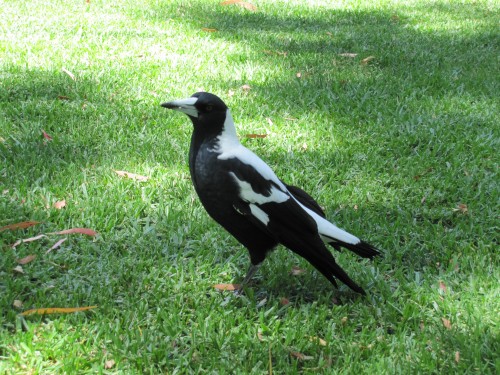Upset birds in Artarmon
As I start this update post, I regret to say that I do not have any photos to share. The reason is simple. This article resulted from an experience I had last week while playing cricket with my six and half year old grandson. We were in his backyard here in Artarmon, north Sydney, where we are visiting at present. We were really into our game when our attention was drawn to the sound of many alarmed birds near the garden, in the street and in nearby properties. I did not have time to race inside and collect my camera.
First it was the alarm calls made by at least a dozen or more Noisy Miners. They were really upset about something but we couldn’t tell what it was. Naturally we stopped playing our game and started looking around, trying to determine the cause of their distress. My grandson, despite his youthfulness, is often aware of the birds wherever he goes. My intense interest has rubbed off on him and his father.
Next thing the local Pied Currawongs joined in the chorus, along with four or five Australian Ravens. A few seconds later three Laughing Kookaburras joined in the loud calling, along with several local Australian Magpies going stir crazy as well. The local Rainbow Lorikeets, always here in large numbers and always very noisy, set off flying in all directions, calling madly. Three Crested Pigeons skedaddled off over the roof to an unknown destination while the Noisy Miners kept up their protestations.
Meanwhile, the enormous racket unsettled both the Grey Butcherbirds and the Sulphur-crested Cockatoos, their raucous calls just adding to the general confusion. The only birds not upset were the softly twittering Welcome Swallows soaring over head. Or perhaps their twitters were in response to the noise below.
My grandson and I never discovered the reason for the commotion. We saw no evidence of a bird of prey, or an owl, or whatever had disturbed the locals. It generated quite a discussion with him about the possible causes.
We will never know. We can only speculate.
Good birding.
Review: National Geographic Complete Birds of North America
National Geographic Complete Birds of North America, 2nd Edition: Now Covering More Than 1,000 Species With the Most-Detailed Information Found in a Single Volume,
Edited by Jonathan Alderfer, with Jon L. Dunn, maps by Paul Lehman
National Geographic Society, October 2014.
ISBN-10: 1426213735; ISBN-13: 9781426213731
744pages; 10.1 x 7.2 x 1.8 inches
This is a truly magnificent volume and one I am pleased to add to my library. Although I live in Australia and do most of my birding here I have been birding in a number of non-Australian countries. Sadly, I have yet to spend any time birding in the North American continent, a state I would like to correct sometime soon. This wonderful volume just adds a keen impetus to that desire.
I did not buy the first edition of this great work, so I cannot make comparisons. It has been “fully revised and updated” so I will have to take the editor’s word for that. There has been a significant increase in the number of species covered, now numbering over 1000. Edited by Jonathan Alderfer, this volume is a natural companion to the National Geographic Field Guide to the Birds of North America.
Look at the numbers
This monumental work stacks up well as far as the numbers are concerned:
- a total of 744 pages
- Over 1000 species featured (compared with 962 in the 1st edition and 990 in the Field Guide)
- Over 800 distribution and migration maps
- 150 full colour photographs
- 9 photographers
- Over 4000 illustrations
- 21 artists
- 89 family groups included
- An interesting group of rarities discussed
- The text draws on the combined expertise of 25 birding authorities
- Two pages of references to Additional Reading
Format and layout
Each family of birds has a short introductory essay, followed by thorough coverage of each species in that family. Each species is then given a thorough coverage in the main body of the text, including:
- a general introductory paragraph
- Identification details (including male/female, juvenile and plumage variations)
- Geographic variation (where appropriate)
- Details of similar species
- Voice
- Status and distribution
- Population notes, including changes in numbers
- Range maps
- A small, field guide type illustration
- A photograph (selected species)
Range maps
The colour-coded range maps are very detailed and include:
- breeding range (salmon)
- year-round range (purple)
- winter range (blue)
- migration range spring and autumn (orange)
- migration range mainly in spring (green)
- migration range mainly in autumn (yellow)
- a range of other symbols (eg arrows showing direction of migration – see below)
Birds in flight
One of the useful details include the illustrations showing different aspects of a species in flight. This is particularly handy for those species birders see more often in flight rather than sitting or perching.
Concluding comments:
Overall, this is not only an impressive publication, it is immensely useful and helpful. It is by no means a thorough scientific handbook featuring and summarising all the current knowledge on each species; other handbooks do not far more effectively. (As an aside, it is nothing like our Handbook of Australian, New Zealand and Antarctic Birds (HANZAB) which is in 7 volumes, each of over 1000 pages of small print.) It doesn’t pretend to be an exhaustive authority on all things birds in North America. However, it succeeds admirably in being a single-volume reference to all the species of one continent, easy to read, easy to use and a delight to read – or just browse. It will delight all birders, from casual and inexperienced backyard birders through to field-hardened experts.
All I have to do now is:
- Find space on my bookshelf for this new volume
- Save up for a birding trip to North America.
Simple.
Good birding.
Disclosure: I would like to thank National Geographic for kindly providing a review copy of this book.
Further reading:
- National Geographic Pocket Guide: Birds of North America
- National Geographic Complete Birds of North America 2nd edition: a book review
- Review: Brushed by feathers by Francis Wood
- Review: a Field Guide to the Birds of Colombia
- Review: A Field Guide to the Birds of Australia (8th edition, Simpson and Day)
- A guide to the birds of East Africa: a novel
World record set by birder
I regard myself as a devoted and keen birder. I am not a twitcher – I usually can’t be bothered going to see a rare bird even if it occurred a few kilometres away from home. I am not a fanatic – I do have other interests (too many in fact). I do not go racing all over the countryside in order to see birds.
But I am a lister of birds seen. I keep day lists, month lists, year lists and a life list. None of them are very big because I do not regard birding some kind of competition or race to see the most species. I do keep all of my sightings on a database stretching back as far as 1977. I guess that is bordering on fanaticism.
I do admire birders who dedicate a whole year to seeing as many species as possible. Even more, I envy birders who have had the opportunity to travel to almost every country of the world in order to make a life list of thousands of species. Their single mindedness to the task is admirable, and I hope that they have fun doing it.
Until a few days ago I had not heard of world record holder for having seen the most bird species on a global scale. I had read about a previous record holder Phoebe Snetsinger, but the name of Tom Gullick was a new one to me. At age 81, this dedicated Englishman is the first person to have seen over 9000 different bird species in a lifetime. You can read about him here.
With a world wide life list hovering around just over 400 species, I have a long way to go to catch up. I haven’t even seen half of Australia’s bird species yet. [Sigh]
Some birds of the Artarmon area – and two young birders
I am currently in Sydney visiting my family, including my only two grandchildren. They are very demanding and energetic and this makes me tired, but very satisfied. When we are staying with them I don’t get many opportunities to get out birding. This trip has been a little different and I will write about that in the next few days.
One interesting thing happened this evening. For his fifth birthday in October I gave my grandson a simple, lightweight pair of binoculars. I hasten to add that this was at his request; he’d often seen me using mine and wanted to be like his granddad. We were on the front lawn looking out for any birds we could see. We managed to list the following:
- Australian Raven
- Rainbow lorikeet
- Grey Butcherbird
- Galah
- Laughing Kookaburra
We were just heading off inside for them to go to bed when Miss 2.5 yo came running up to me all excited. She pointed to the Grey Butcherbird perched on the power line about 5 metres away. I guess they are never too young to start getting them interested in birding.
Other birds seen or heard during our nearly three week stay include:
- Pied currawong
- Noisy Miner
- Common Myna
- Crested pigeon
- Australian Brush-turkey
- Sulphur-crested Cockatoo
- Tawny Frogmouth
- Australian Magpie
- Wonga pigeon
- Rock Dove
- Eastern Koel
Good birding.
A significant milestone for Trevor’s Birding
Trevor’s Birding site has reached a significant milestone this morning:
5000 COMMENTS
Over the years the comments on this site have sometimes dribbled in, at other times they come in a flood. Some posts have received hundreds and comments, and others none at all. Some have been hilarious, many have been helpful – to me and my readers – and others very thoughtful. Fortunately, very few have been annoying and on only one occasion have I had to close comments on a post due to misguided people trying to post abusive or less than polite comments.
I have made good friends via this site and have even have had invites to other birders’ homes and one has even stayed in my home. Most birders are wonderful people, and sharing a love of birds gives one common grounds to explore our interests.
Writing about birds on this site has also led to some unexpected side benefits:
- I am in demand as a public speaker about birds.
- I have received quite a number of bird books from publishers wanting me to review their books.
- I have been interviewed twice by our local newspaper.
- My bird photos have appeared in books, magazines, periodicals, newspapers, on pamphlets, on tourist guides and even on the cover of a CD.
- This site is regularly listed as one of the top 100 birding sites worldwide. (At one point a few years ago it reached #26.)
Above all, I have been delighted with the development of a sense of community amongst my readers. They correspond with each other via the comments section, helping each other and giving advice to those with questions about birds, especially injured or orphaned birds.
But wait – there’s more:
I do not intend to rest on my laurels. I have plenty more photos to share, experiences to relate and stories to tell about birds. More posts are scheduled to appear in the coming days and weeks, and as I travel around I plan to take photos of birds wherever I go – then share them here. (Why not visit Trevor’s Travels, another of my sites where I share photos of my travels here in Australia and also in Thailand, Nepal, Ethiopia, Morocco and Spain. Don’t forget to leave comments!)
You could also investigate the archives section (link above) or investigate any of the categories (links on the side bar) and read older posts I have written. Nearly 1500 articles about birds and birding, here and overseas. And I’d love more and more comments too.
Why not leave a comment or two here today?



